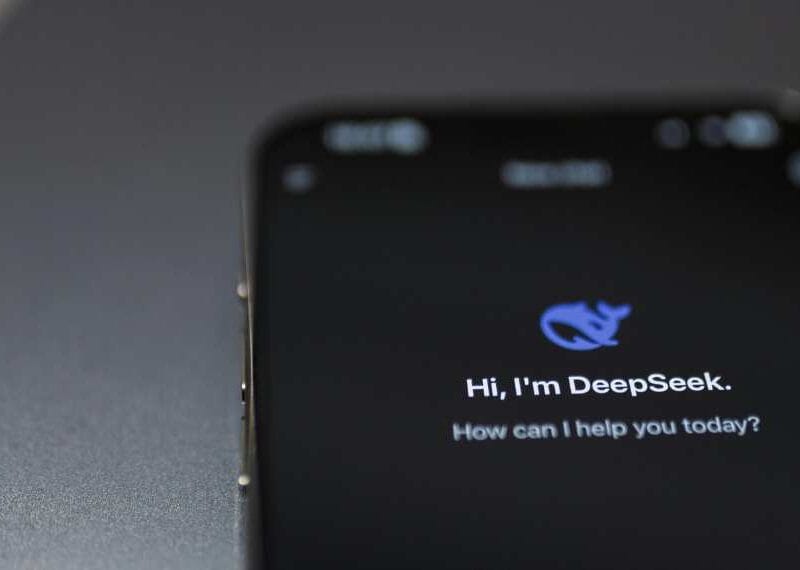Responsible Data Storage: From Data Hoarding to Data Stewardship
Even as the global digital economy boom, a hidden crisis is brewing.
As businesses generate unprecedented volumes of data, the digital landfills on our servers are overflowing.
This unchecked data growth isn’t just a storage problem; it’s a significant drain on energy resources and a major obstacle to corporate sustainability goals, with data centers worldwide projected to consume an ever-larger share of the world’s power grid.
The solution to this challenge lies not in building more data centers, but in fostering a culture of responsibility.
The most powerful lever for change is not a new piece of hardware, but a shift in human behavior—empowering every employee to become a conscious steward of the data they create and manage.
But how can leaders effectively drive this cultural transformation?
To find a practical blueprint for action, the Techronicler team turned to a panel of distinguished tech thought leaders, business executives, and IT experts. We asked them for their on-the-ground strategies to address a critical question:
“How do you influence or empower your workforce to implement responsible data storage practices to minimize resource strain and improve sustainability?”
Their insights offer a roadmap for turning a company-wide challenge into a shared responsibility, proving that a sustainable data culture is not just good for the planet, but essential for modern business performance.
Read on!
A Comprehensive Yet Sustainable Approach
Educating and training employees to embody responsible data handling practices – technology, learning and cultural change all played a role in encouraging our employees to store data responsibly.
At base lies creating practical data-minimization policies that show employees how collecting and retaining only what you need for as long as you need will actually diminish your environmental footprint.
Developing compelling training programs is the foundation of a strong workforce. Staff should also be aware that digital behaviour has environmental implications, as data centres use up vast quantities of the world’s electricity.
Learning should center on real-world behaviors such as decreasing the number of non-essential email communications, and optimizing the use of cloud storage and equipment in order to realize tangible environmental gains.
By embracing technology-enabled sustainable behaviours, you can revolutionize day-to-day operations and inspire your staff. It is increasingly more important to organizations to purchase energy efficient hardware, utilize virtualization technology to reduce the number of physical servers it has to purchase, and to move workloads to cloud providers that run more efficient systems than a typical data center.
When it comes to encouraging employees to become energy-efficient superheroes, digital tracking tools can make it possible to for employees to track their own individual carbon footprints (or sustainability contributions), and to take “ownership” of reducing their carbon footprint.
A strong data governance structure also enables the methodical application of the responsible practices. This means applying the right access controls, creating organization-wide security policies and making sure various kinds of data receive proper levels of protection.
An integrated approach to cultural change based on successful practice Regional managers hold the key to success on the front line.
Leadership should be built on promoting the green technologies and investment, giving clear targets, and integrating environmental responsibility into performance management and recognition programs, by encouraging initiatives which are collaborative and at the same time align individual’s actions with the company goals.

Supratim Sircar
Software Engineer, Cisco
Digital Cleanup Days Cut Cloud Costs by €400
With over a decade in digital marketing and agency operations, I’ve seen firsthand how messy data storage quietly drains resources—time, money, and even energy.
That’s why I actively push responsible data practices across all teams I manage.
At our agency, we implemented auto-archive rules in Google Drive—unused assets older than 90 days go into cold storage.
We also run quarterly “Digital Clean-Up Days” where every team audits shared folders and deletes duplicates or outdated files. For example, our creative team cut 30GB of unused video drafts in one session.
In one case, we saved nearly €400/month in cloud costs just by automating cleanup workflows with n8n and limiting upload formats for campaigns.
The key is showing people the impact: not just storage costs, but time wasted searching through clutter. When they see that, sustainable habits follow naturally.
Connect Personal Accountability to Global Sustainability
At spectup, we keep it simple and intentional. We focus more on mindset than mandates.
I always say—if someone doesn’t understand why it matters, they won’t care how to do it. So, I start by linking responsible data storage to real impact: lower energy bills, faster systems, and a smaller footprint.
It helps when you connect the dots between personal accountability and global sustainability.
We make these practices part of onboarding, but we also revisit them often—during team check-ins or when cleaning up project archives.
One of our team members once flagged a massive trove of legacy pitch decks clogging a shared drive, and instead of just deleting, they proposed a quarterly archive review process.
That’s the kind of initiative we reward, even just with recognition during team calls. We also rely on smart defaults—automated retention rules, cloud optimization settings—so the system does some of the heavy lifting.
But in the end, it’s culture that drives this. When people feel trusted and informed, they usually make good decisions without needing a policy slapped on their screen.

Niclas Schlopsna
Managing Consultant & CEO, spectup
Empower Teams to Build Their Own Habits
At Redfish Technology, we’ve learned that the best way to encourage responsible data practices is to empower and educate employees. That means there is no one-size-fits-all mandate when it comes to digital storage and cleanups.
Instead, we’ve created a flexible framework where each department — and in many cases, each individual — chooses the method and timing that works best for them.
We started by making the why clear: excess files and bloated storage don’t just slow down workflows, they also contribute to unnecessary energy use. From there, we gave teams the autonomy to build their own habits.
Some departments schedule monthly quiet hours for file cleanup, while others tie it to project cycles or offboarding periods. Individuals are encouraged to create their own routines, whether that’s cleaning out inboxes every Friday or archiving CRM data quarterly.
By giving employees agency, they’re more invested in the process. Instead of checking boxes, they’re making thoughtful decisions about what to keep, archive, or delete, based on what truly supports their work.
This approach has led to cleaner systems, smoother operations, and a workforce that actually values digital sustainability — not just the appearance of it.

Rob Reeves
CEO & President, Redfish Technology
Visual Shock Tactics Transform Digital Storage Habits
File bloat got real when we started recording internal footage in 4K.
People were archiving six-minute clips weighing over 3 gigabytes each. Multiply that by 40 drivers and 5 days and we burned through 600 gigs in less than a month.
So we used something oddly low-tech to fix it. We printed one terabyte’s worth of fake paper files and stacked them in the meeting room. Full wall of nonsense. No one could look away. Message hit.
Now, when someone talks storage, they picture boxes not megabytes.
We installed a mandatory 30-day auto-deletion on Slack uploads. Everyone signs off on a shared server policy where nothing over 250 megabytes survives unless renamed with a use-case tag.
We track violations like we track stock shortages. Name goes on a dashboard. No shame, just stats.

James McNally
Managing Director, SDVH [Self Drive Vehicle Hire]
Open Policies Link Individual Actions to Environmental Goals
Talmatic empowers its employees to make sustainable storage choices by integrating open data lifecycle policies into daily work and setting them as part of performance expectations.
We concentrate on deleting old files, archiving infrequently accessed data, and using cloud solutions that prioritize energy-efficient infrastructure.
Education and open reporting on the environmental impact of storage habits help the employees connect individual action to broader sustainability goals.

George Fironov
Co-Founder & CEO, Talmatic
Shared Discipline Reduces Storage Load and Costs
At EcoATM, we treat responsible data storage as a shared discipline, not a siloed task. My team reviews usage patterns monthly and deletes outdated or duplicate campaign files. We align with IT on storage limits and retention policies that match actual business needs. Everyone contributes by cleaning folders, archiving correctly, and flagging bloat. It’s not about setting rules, it’s about reinforcing habits that reduce unnecessary load on our systems.
We apply the same standard to our vendors. If a tool stores large data sets without clear retention settings, we push for changes or replacements. For instance, we switched from one analytics platform to another that allowed tighter data windowing and controlled exports. That cut usage while keeping reports clean and fast. The team saw the impact immediately in load times and budget control.
Our creative and lifecycle marketing teams work within set file caps for video, image, and email assets. We run quarterly reviews to clear out expired campaigns. This has lowered storage needs and improved asset discovery. People stop wasting time digging for files that don’t belong. Responsible storage becomes a habit when it’s part of how you work, not just a policy buried in a handbook. That’s where sustainability gains traction.
Simple Backpack Analogy Makes Digital Decluttering Stick
To get the team on board with responsible data storage, I keep it simple and relatable.
Imagine your data as a backpack, you don’t want it stuffed with junk weighing you down. I encourage everyone to clear out old files regularly and think twice before saving duplicates.
Communication is key: I share quick tips and reminders that stick, like “less is more” for digital clutter.
Celebrating small wins helps, when someone cuts unnecessary data, it’s a win for the planet and our systems. I also make it easy by providing clear guidelines and tools that do the heavy lifting.
When people see how their actions lighten the load, they feel empowered, not burdened.
It’s a team effort; together, we keep our digital house tidy and sustainable. A little digital spring cleaning can be surprisingly satisfying.

Mike Khorev
SEO Consultant, Mike Khorev
On behalf of the Techronicler community of readers, we thank these leaders and experts for taking the time to share valuable insights that stem from years of experience and in-depth expertise in their respective niches.
If you wish to showcase your experience and expertise, participate in industry-leading discussions, and add visibility and impact to your personal brand and business, get in touch with the Techronicler team to feature in our fast-growing publication.












